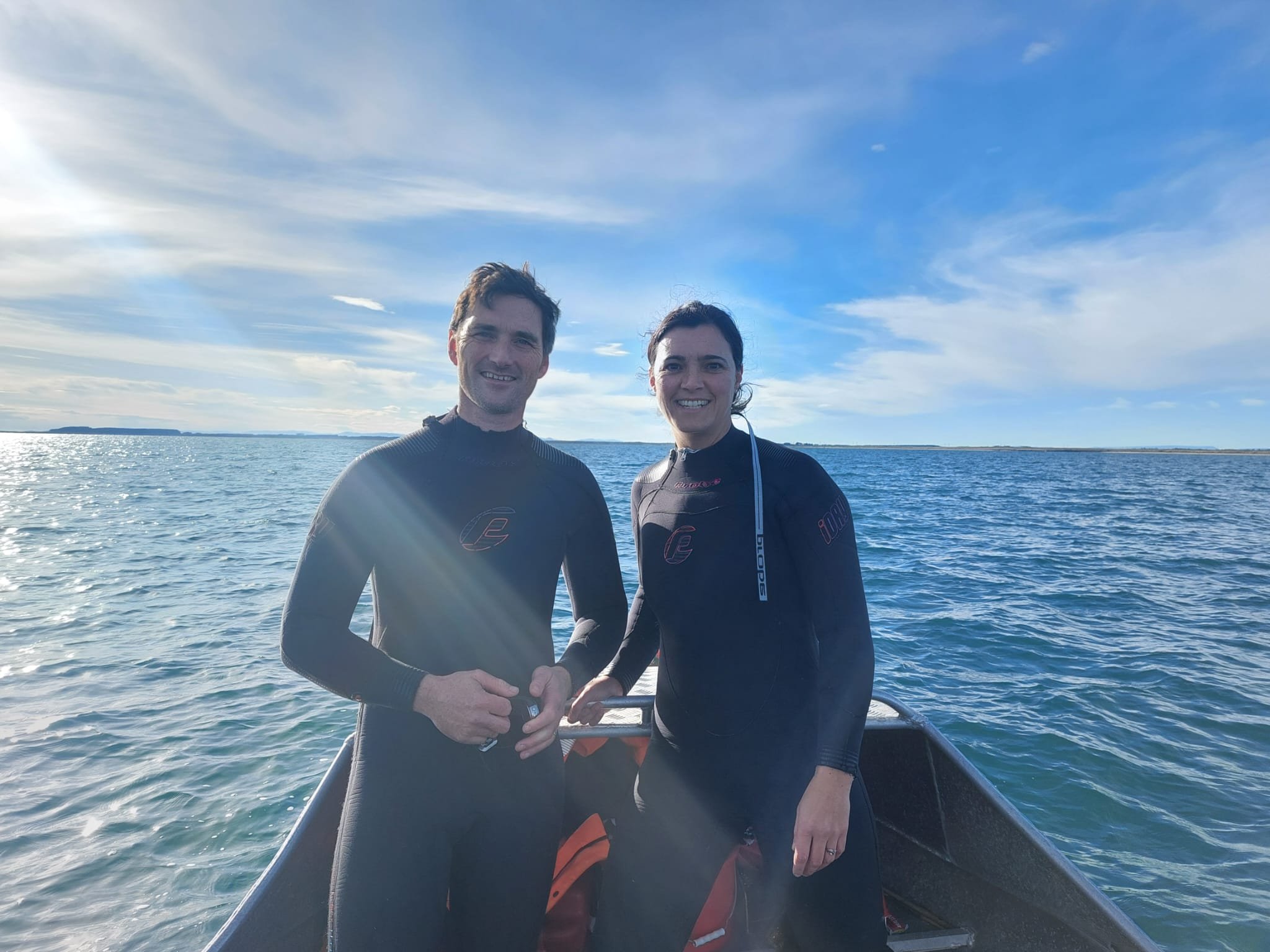About Sea Nest.
Sea Nest is a small team with a can-do attitude and a big vision.
Based in Murihiku Southland, Sea Nest was established by scientists and experts from e3Scientific Ltd who are passionate about blue restoration.
Meet the Team
-

Bryony Miller
DIRECTOR, MARINE ECOLOGIST AND SCIENTIFIC DIVER
-

Waka Miller
DIRECTOR, SCIENTIFIC DIVER, SEEDING AND DEPLOYMENT
-

Glenn Davis
DIRECTOR, ECOLOGIST AND BUSINESS MANAGER
-

Gemma Davis
DIRECTOR, AND RESOURCE MANAGEMENT PLANNER
Our Story.
The Sea Nest journey began underwater. As a scientific diver and marine ecologist, Bryony Miller, has witnessed the depletion of marine life, even in the cold, remote waters of Te Waipounamu, the South Island of New Zealand. Thriving habitats are being suffocated by sediments. Rocky reefs are being removed or reduced to meet human needs. Kelp forests are disappearing as they battle human induced habitat and ecosystem change.
Yet for Bryony, and fellow scientific diver Waka Miller, time underwater also highlights that all is not lost. Native species take every opportunity to find new homes. They cling to wharfs, piers and moorings, and vessels. They even find haven in rubbish, discarded on the sea bed. In some places, man made structures are the only surfaces where indigenous species make homes and survive. But these structures do not always provide the diverse habitat, refuge, or corridors needed for an ecosystem to thrive.
Bryony and Waka had an idea. To design and construct eco-designed artificial reefs that mimic natural, rocky reef habitat and can be deployed in degraded areas to restore natural ecosystems. They shared their idea with e3Scientific colleagues, Glenn and Gemma Davis, who were excited by the potential to make a difference in marine restoration. Together, the team decided to make this vision a reality - and Sea Nest was born.
The collaboration started with research. This established that artificial reefs have been successfully constructed to restore ecosystems in tropical settings using products such as ‘reef balls’. Yet very few projects have been undertaken in Aotearoa or in temperate climates overseas. What’s more, no locally designed, affordable artificial reef modules were available on the market.
So we decided to invest in making our own.
The Sea Nest team worked with McGregor Concrete in Winton to design Sea Nest modules. Our design brief was extensive. The modules had to be suitable for restoration in temperate marine environments. This included providing the right type of surface and maximising it to support colonisation by indigenous plants and animals - including mahinga kai resources like pāua, mussels, oysters. It also had to provide niches and refuge for animals like fish, octopus, and crayfish. It was important for the substrate to be made with sustainable materials that are suitable for growing kelp and seaweeds naturally - from the bottom up - and for the modules to be low-cost, stackable, easy to transport and deploy, long-lasting, and stable enough for use in engineering projects, such as breakwaters or in marine farms. We also wanted the modules to have a low carbon footprint, so we decided to construct them using concrete ‘overpours’, which would otherwise be waste.
The team believed that success could be amplified by seeding the modules - to accelerate the growing process, and to cultivate target species. This could not only guarantee the establishment of foundation habitat species such as kelp - it could enable the cultivation of target plants or animals for food, farming and carbon sequestration. Sea Nest started research into propagating and seeding Sea Nests by growing and attaching Macrocystis pyrifera (Bladder Kelp) to the first modules. Macrocystis is a native, foundation habitat species and as the fastest growing organism on Earth, is known to capture carbon as it grows. Our kelp has been grown in partnership with Kelp Blue at their hatchery in Bluff.
To date, modules have been deployed in partnership with Southern Marine Farms Ltd. Sea Nest is also working with South Port NZ Ltd to utilise Sea Nest modules for future marine restoration in Bluff Harbour.
Sea Nest is at the beginning of our journey. The idea for Sea Nest was first conceived in 2021. Our first modules were completed in February 2024, and our inaugural seeded Sea Nests were deployed in mid 2024. We hope to widely deploy and expand the marine range, as well as develop freshwater products.
The Sea Nest dream is to make marine restoration viable for everyone - from communities and rūnanga, to blue industry and government.
Be part of our journey.


